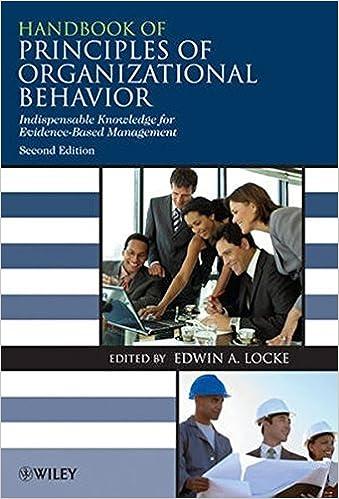Index cards and pen or pencil. Form teams of six members and select one member to serve
Question:
Index cards and pen or pencil.
Form teams of six members and select one member to serve as leader. For each team, prepare a deck of eight cards as follows:
Facts [each one on a card with the card number (1, 2, 3, 4, 5, 6, 7, or 8) on the back]:
1. Provider B offers low prices with proven technology but never finishes a job on time or without bugs.
2. Provider C does very good work with proven technology but is typically quite expensive.
3. Provider D is going to offer new yet inexpensive technology in its bid. Only two other companies have used it but have no complaints. The system worked and was on time.
4. Provider E has never been late on a project and its prices are reasonable but almost always its systems take two weeks to work seamlessly.
5. Company A headquarters is adamant about the project being completed on time and that it work perfectly within two days.
6. The company (A) has been barely profitable in the last two years and headquarters is very cost conscious.
7. Blank.
8. Blank.
Procedure: The team of one leader plus five members work for company A. Company A headquarters wants to install a new telephone system and has delegated the project to the team. The team is looking at bids from competing companies (B, C, D, and E) for the telephone system. Each team member and the leader have spent several months doing research related to the decision (different people have worked on different things). The project leader makes the fi nal decision. Complete each of the following three trials.
Trial 1 .
The leader gets cards 1, 2, and 5. Team members get 3, 4, and 6 – 8. The leader makes the decision without talking to the members. The decision is recorded without further discussion.
Trial 2 .
Distribute the cards as in Trial 1. The leader can talk to one member about what is on the member ’s card. A blank card allows another choice. The leader then makes the decision. The decision is recorded without further discussion.
Trial 3. Cards 1 to 6 are randomly distributed, one per person (cards 7 and 8 are not used in this trial). There is full discussion, allowing all members (including the leader) to report the contents of their cards and fully argue their views. Then the leader makes the fi nal decision. The decision is recorded.
Questions for discussion:
1. Which trial yielded the best decision? Why?
2. What happens when leaders do not seek information from followers, as in Trial 1?
Knowing this, why do you think that leaders do not often seek information from their followers?
3. Why do subordinates sometimes choose not to speak up even when they have relevant information?
4. In light of what you have learned in this exercise, what can be done in organizations to ensure the distribution of knowledge and information?
Step by Step Answer:






